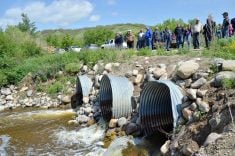Manitoba anglers spend most of their time targeting fish that hang out near the bottom.
There are exceptions; rainbow or brown trout often feed at the surface or in mid-depth water. Goldeye and mooneye often cruise just below the surface.
In most cases though, the depths are where the action is.
Read Also

Land agreement inked for Cereals Canada GATE facility
James Richardson & Sons, Limited will provide land for the Global Agriculture Technology Exchange (GATE) building in Winnipeg, according to memorandum of understanding with Cereals Canada
Like a lot of anglers, I used to reach for jigs with bait, plastic tails or tubes when fishing deeper waters. Why not? Jigs may be the single most versatile fish-catching technique, especially at depth.
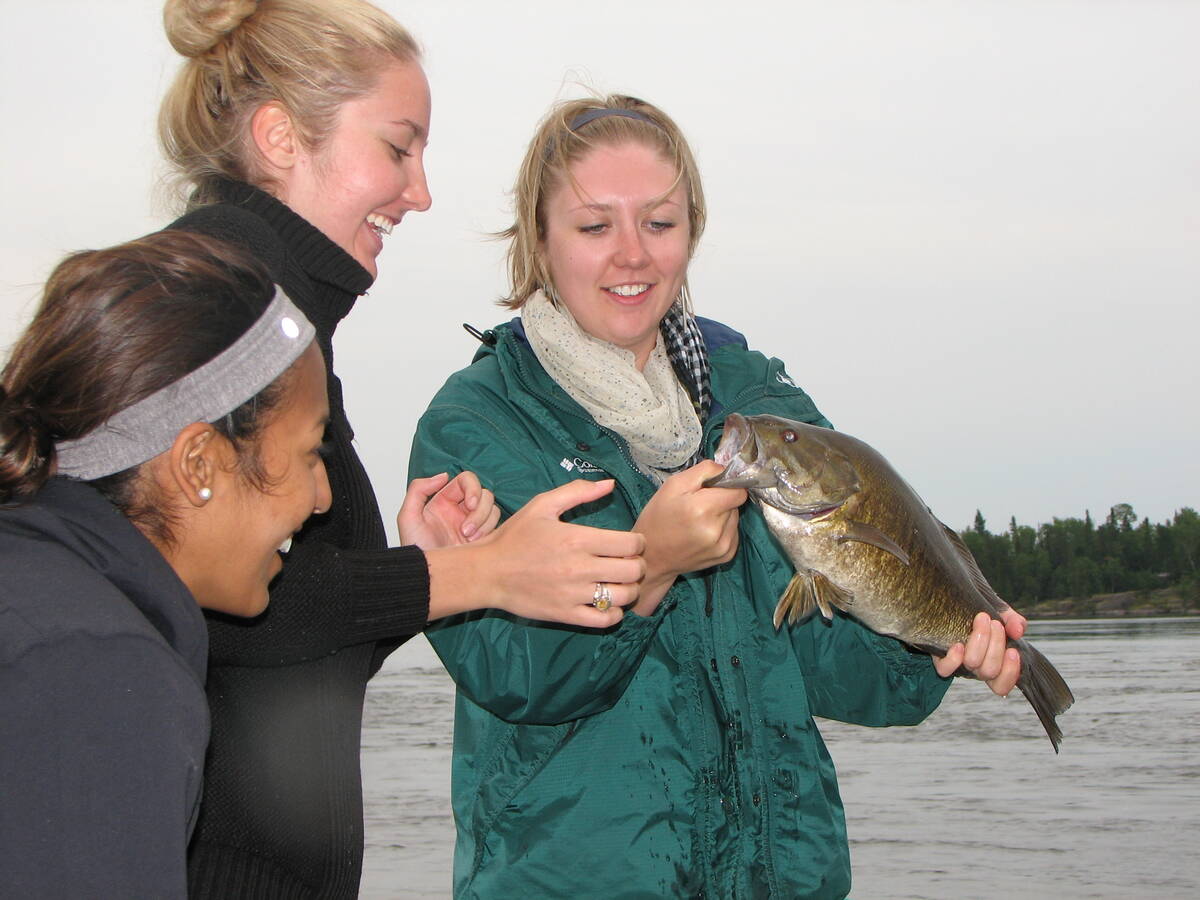
More recently, I’ve started to see jigs as more of a second-best approach. My best spots in the Canadian Shield are heavy with boulders and often complicated by current. They’re rife with snag risks and, over time, I grew tired of losing one jig after another.
Today, after about four decades of use, my aging, rusting, jig stockpile doesn’t get much call to action. My bottom bouncers and slip bobbers get a lot more time on the line.
Don’t get me wrong: I know that jigs are extremely effective. Many anglers use them almost exclusively and with great success. For me though, it comes down to ease of presentation in certain situations and, with bobbers, anglers have the extra fun of seeing and reacting to a bobber going under.
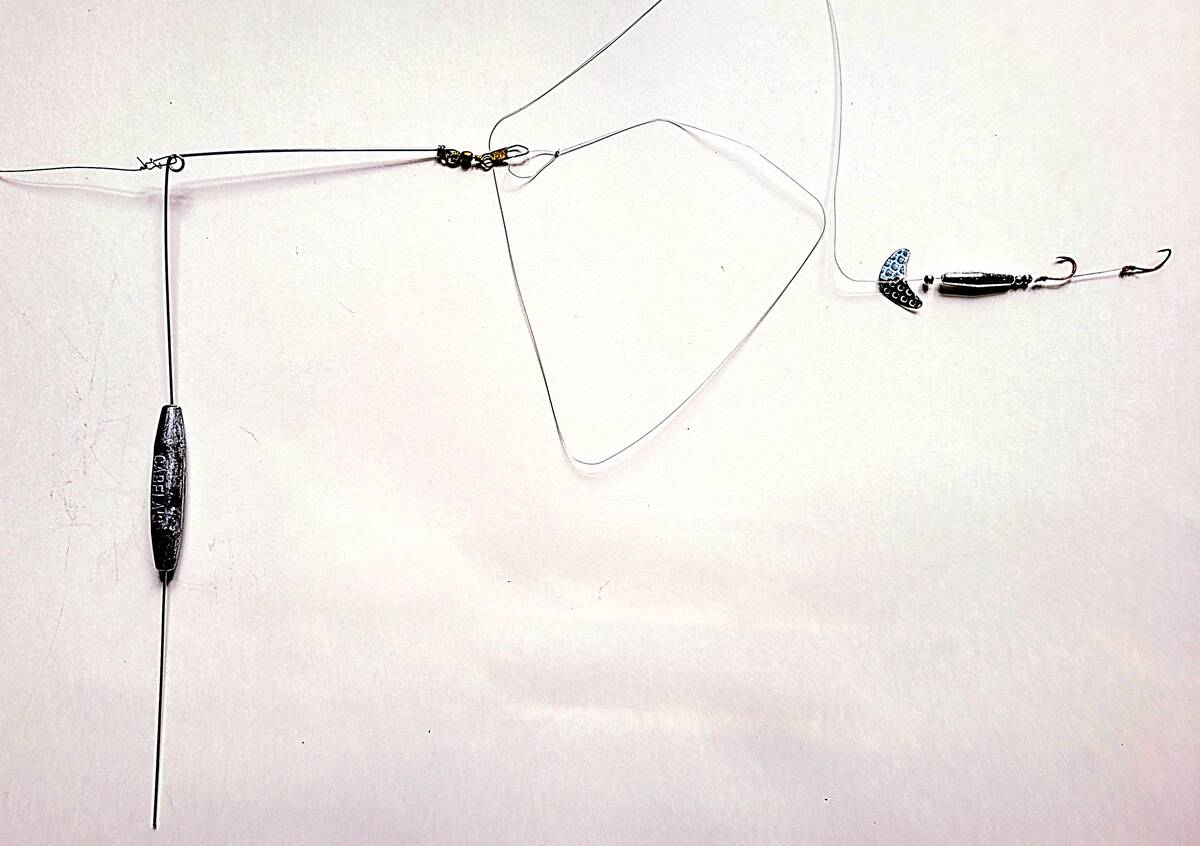
Bouncer basics
Whether you’re drift fishing in a current or trolling around reefs and other lake structure, bottom bouncers are an effective replacement for jigs or trolling with inline weights and Little Joe spinners or worm harness rigs. I’m surprised that they don’t get more use.
Bouncers have the dual benefits of keeping your presentation just off the bottom and significantly reducing snags in rocky cracks and crevices.
The standard bouncer is a right-angled piece of stiff wire with a lead weight around the vertical section that runs over the bottom. The horizontal section at the top of the bouncer has a snap and swivel where you to attach your presentation.
I make my spinner or worm harness rigs with about a meter of monofilament, which keeps it a modest distance from the bouncer.
There are several advantages to bouncers:
The long wire significantly reduces snagging in rocky areas.
They can be used with bait, spinner rigs and some crankbaits, like neutrally buoyant minnow lures.
They work in either mid-depths or deep water, as well as areas where the depth changes quickly.
Beginners quickly learn how to use bouncers, especially when trolled behind a boat.
Bottom bouncers usually get my vote for walleye fishing during the summer months, when the fish lie deeper.
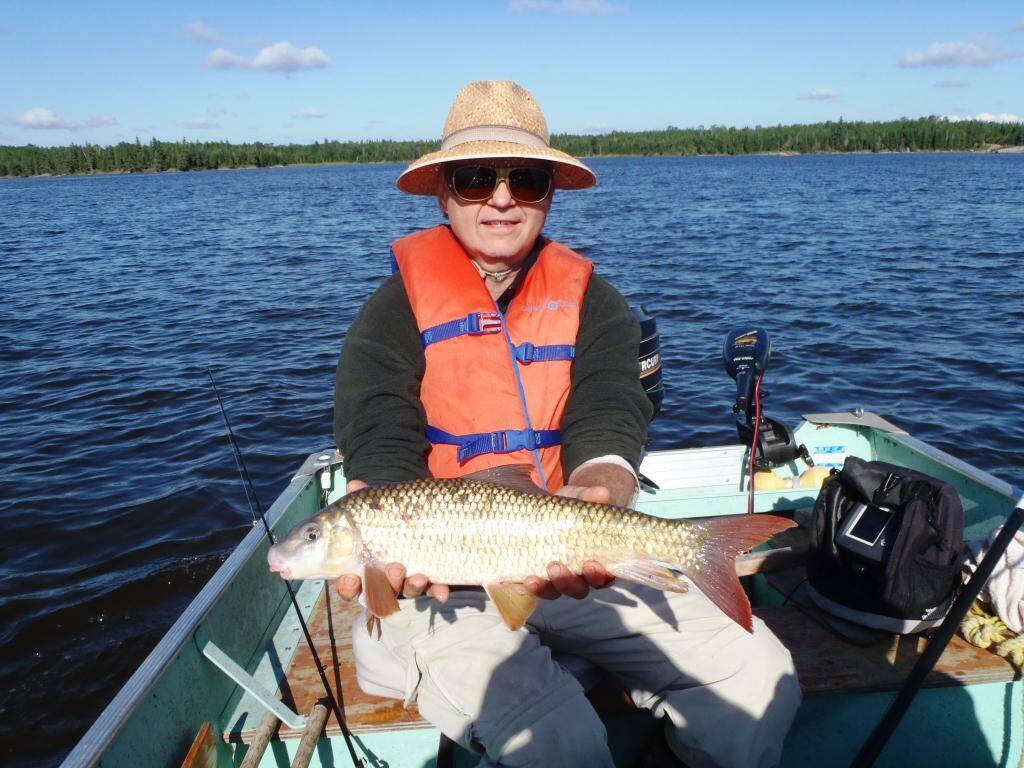
As I usually slow-troll my bouncer presentations, I opt for three-ounce bouncers. I rarely go below two ounces. A bouncer that’s too light tends to rise off the bottom due to line resistance through the water column.
Keeping your trolling or drifting speed down is also important. An average speed of 1.5 kilometres an hour is about right, but you can adjust depending on depth and your bouncer weight.
The ticks and stutters of a bouncer moving over the bottom are telegraphed to the rod, which should be stiff enough to handle the extra weight and resistance. When the pull becomes smooth, the bouncer is lifting off the bottom and that should be a cue that you’re going too fast or the depth has increased and you need to let out line.
This resistance on the bottom can feel like a fish bite. The real tell for a fish on the line is a heavier and steady pull on the rod.
The optimal angle of the line from the rod to the bottom is about 45 to 60 degrees. If the bouncer gets too far back from the boat, it’s more prone to getting hung up. A steep angle also lets you make sharper boat turns when you troll along contours or reef edges.
It’s important to take some care when dropping the rig down into the water column. Don’t just let it free-spool; your rig will probably tangle with the bouncer. The boat should be in motion before you start the drop.
When you troll or drift over deeper water, pay out line until you’re back on the bottom. If you’re moving up a reef or ledge, take in some line to reduce snagging. Once the boat operator gets the speed right and if the angler pays attention to the few important details, the rest is pretty easy.
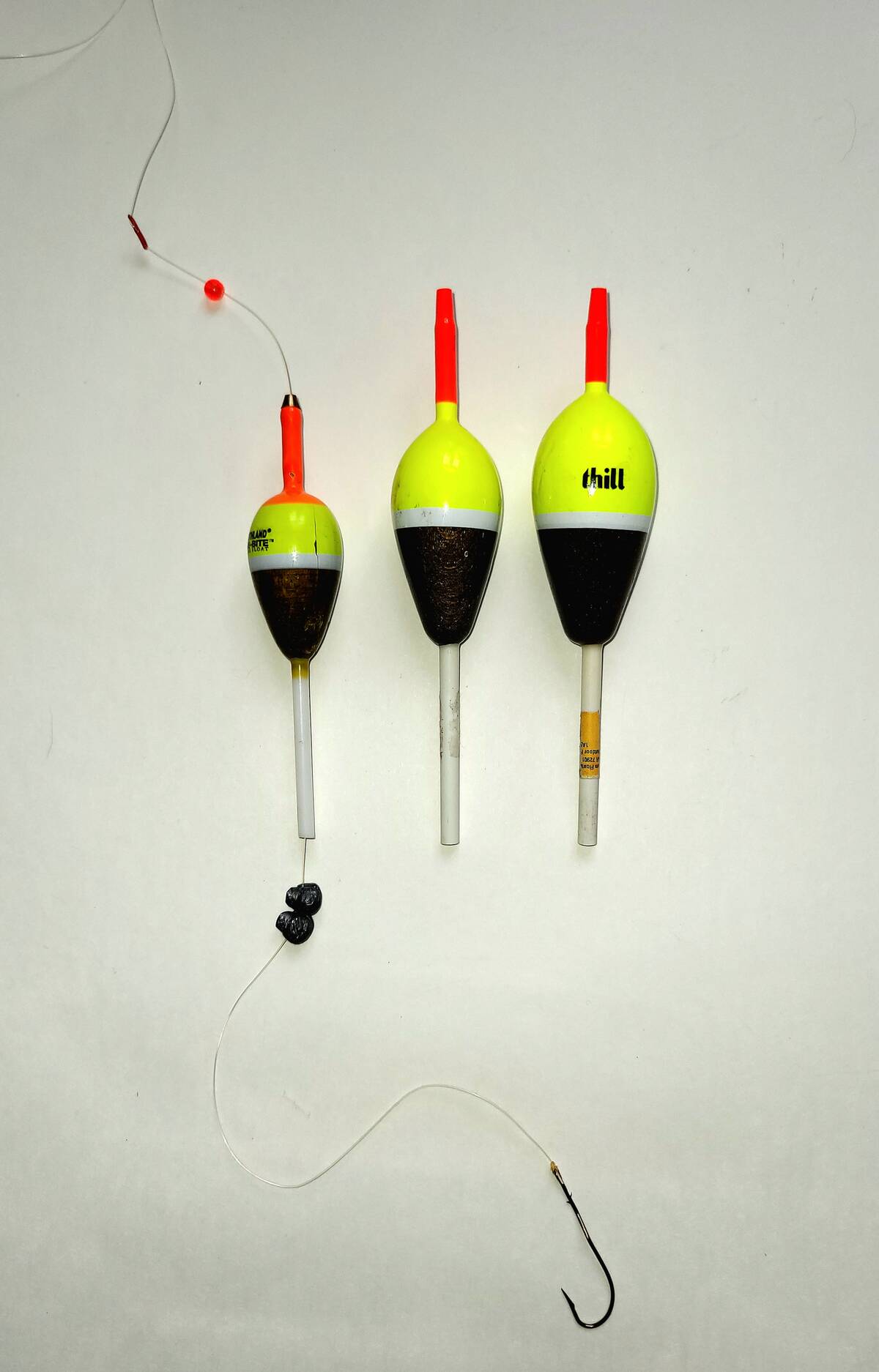
Bobbing for bottom dwellers
I grew up with traditional red and white bobbers. They catch fish, but because you can only reel up your line to the spot where the bobber is attached, you’re limited to fishing in shallow water.
Slip bobbers can be used in shallow water, but they really shine when you fish deeper or in spots where depth varies. A slip bobber lets your line move through it. Most have a hollow tube extending through the float section with your line running inside. The depth at which you fish is set by a stopper that’s installed on your line above the bobber. This bobber-stop is designed to be moveable on your line, allowing you to set the depth at which your bait hangs. The rig is finished off with split shot or inline weights and a hook or a jig.
I prefer a bare hook, some split shot and bait most of the time, but a light jig can make things easier when you’re starting out.
The fussiest part of using a slip bobber is adjusting the stop until the bait hangs where you want it, usually just off the bottom. It’s good practice to check that depth setting fairly frequently, in case your stop has moved on the line.
Rather than describing the details for setting up the rig, I recommend checking out online videos. One of the best I’ve found, “How Does A Slip Bobber Work?” from the Youtube channel Knetters Practical Outdoors, has a Red Green Show feel to it, but the advice is solid and well presented.
I recommending having bobbers in two or three sizes. Different situations may call for different amounts of flotation.
There are three options for bobber stops: flat plastic stops, pre-tied braided line stops and rubber stops.
I prefer the flat plastic, as they slip the least when you set them up properly and they move easily through the rod guides, but they’re also hard to find locally. Most people use pre-tied braided stops, which are readily available and are almost as effective. I find that the rubber stops move on the line too easily.
The precise depth control makes bobbers effective in many situations. They really shine on mid-depth reefs (three to eight metres) and other structures that tend to hold fish in numbers. I set up close to the reef, adjust my rig to match the depth and then work the area methodically, casting and slowly working the rig back to the boat with long pauses to just let it sit. The bobber responds to even the gentlest wave action, so the rig basically jigs itself.
I also like to use bobbers around reefs and points in rivers with noticeable currents. I anchor upstream and drift a bobber down to it. Fish tend to hold on the front side of these areas and rarely pass up a drifting worm, minnow or leech.
These locations require more work to set the depth, as it may vary considerably over the course of your drift, but it also lets you reach fish that are difficult to take with other techniques. If you keep your drifts straight downstream, snag retrieval is much easier than if you cast out from the boat.
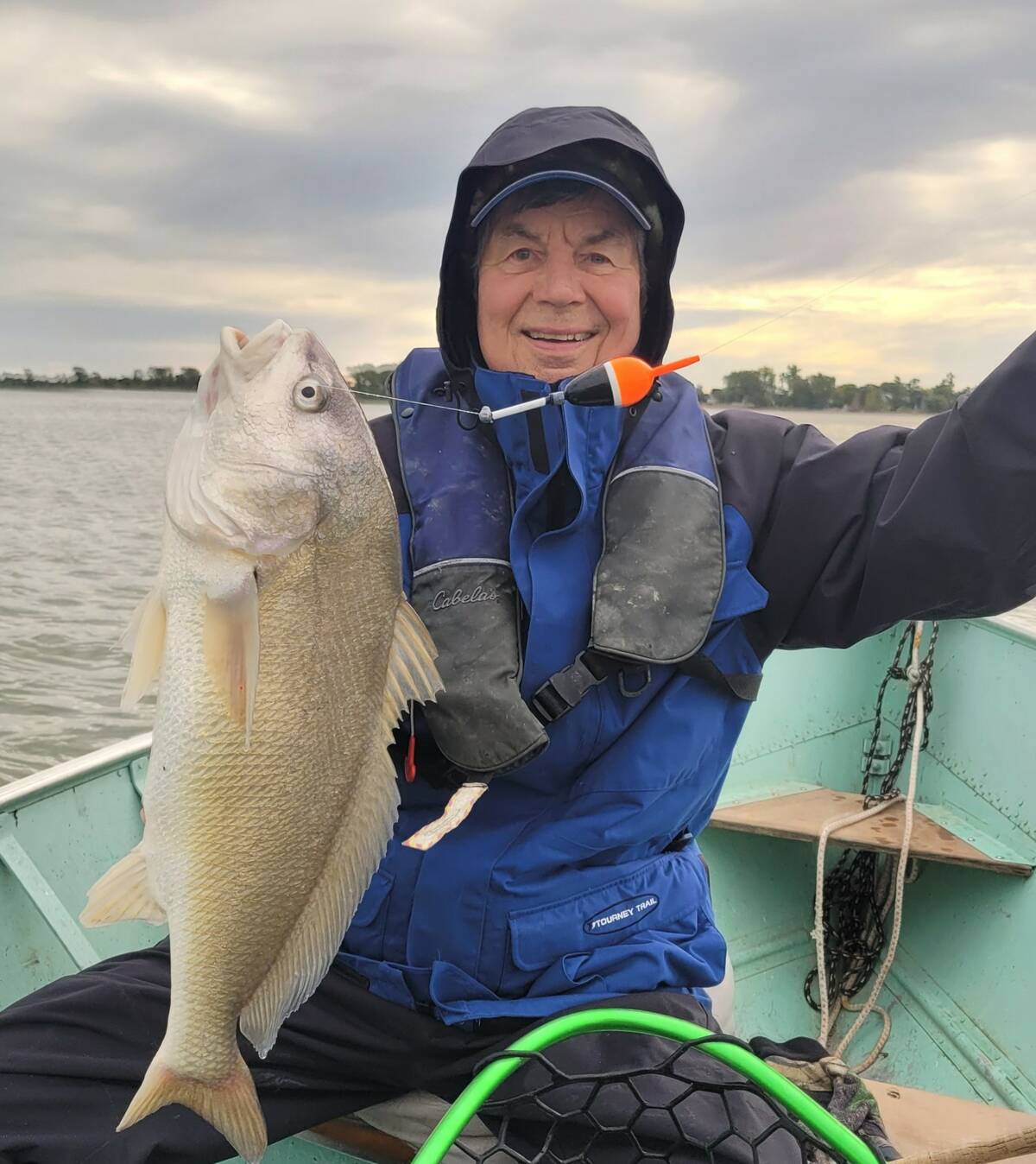
Bobbers also work in areas with no structure at all.
Three years ago, I discovered the stellar open water angling on the south end of Lake Manitoba. I’ve had solo mornings where over 40 walleye, perch and drum came to the net, along with the odd pike and burbot. The bottom is featureless, and depths barely change over great distances, but bobbers have become my go-to approach.
I anchor, set up my bobber with a light jig and minnow that rides just inches off the bottom and drop it beside the boat. There is always some wave action on that massive lake, so my bobber is working my bait on and off the bottom. If I am targeting perch, I’ll switch to a small jig and half a minnow, but larger walleye and drum are also be seduced by this minimalist approach.
There are many other situations out of the deep water where bobbers also shine. Slip bobbers, small hooks and a bit of worm are the best approach for goldeye and mooneye feeding at the surface or in mid-water. When catfish are holding in shallower riffles in the Red River, it’s time for big bobbers, large hooks and cut bait. Large dead baits suspended under bobbers also work well in shallow waters for big pike in May.
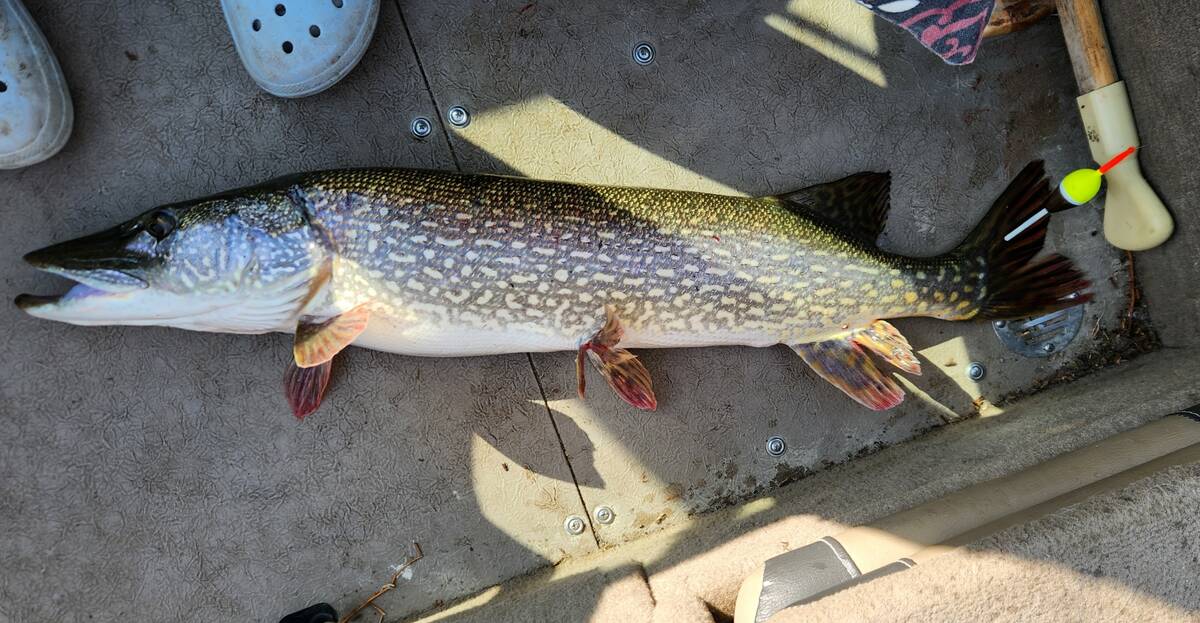
One slip bobber fishing trip, with a boatload of beginners, still brings back smiles. I had my two daughters and one of their friends out for some bass fishing. Two of the three had limited or no fishing experience. The first spot was a constant depth on the edge of some current. Here, my youngest daughter saw her bobber disappear, resulting in her reeling in her first master angler fish.
The next spot was more challenging, with current washing over a submerged reef just offshore and next to a busy campground. It’s the kind of spot that most people don’t think to fish.
After the girls figured out how to drift their bobbers down current to the reef, at least half a dozen bass were taken. Campers started to notice, and we soon had a crowd of onlookers a scant 25 meters away.
Bouncers and bobbers each have a learning curve, but even beginners take to them quickly and, with a bit of practice, you’ll gain effective techniques that can be the best approaches for common fishing situations.




